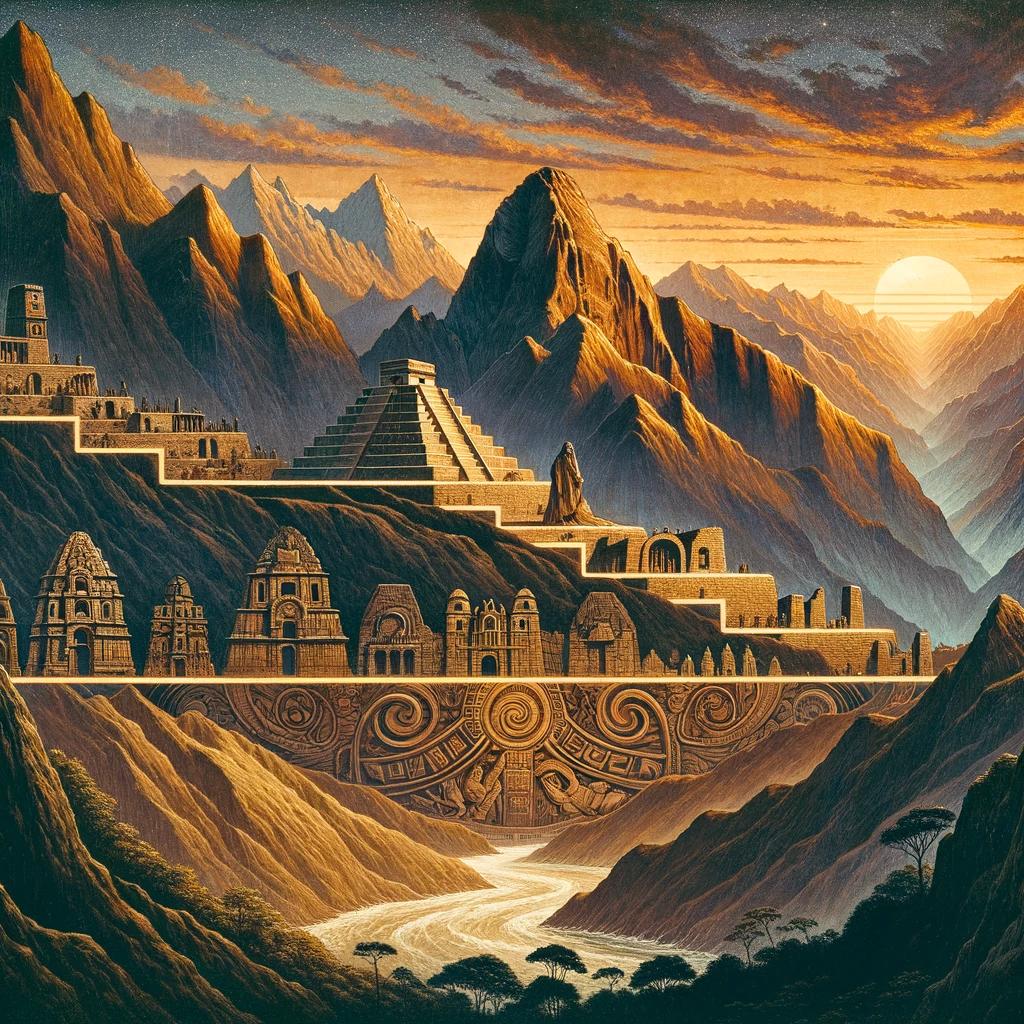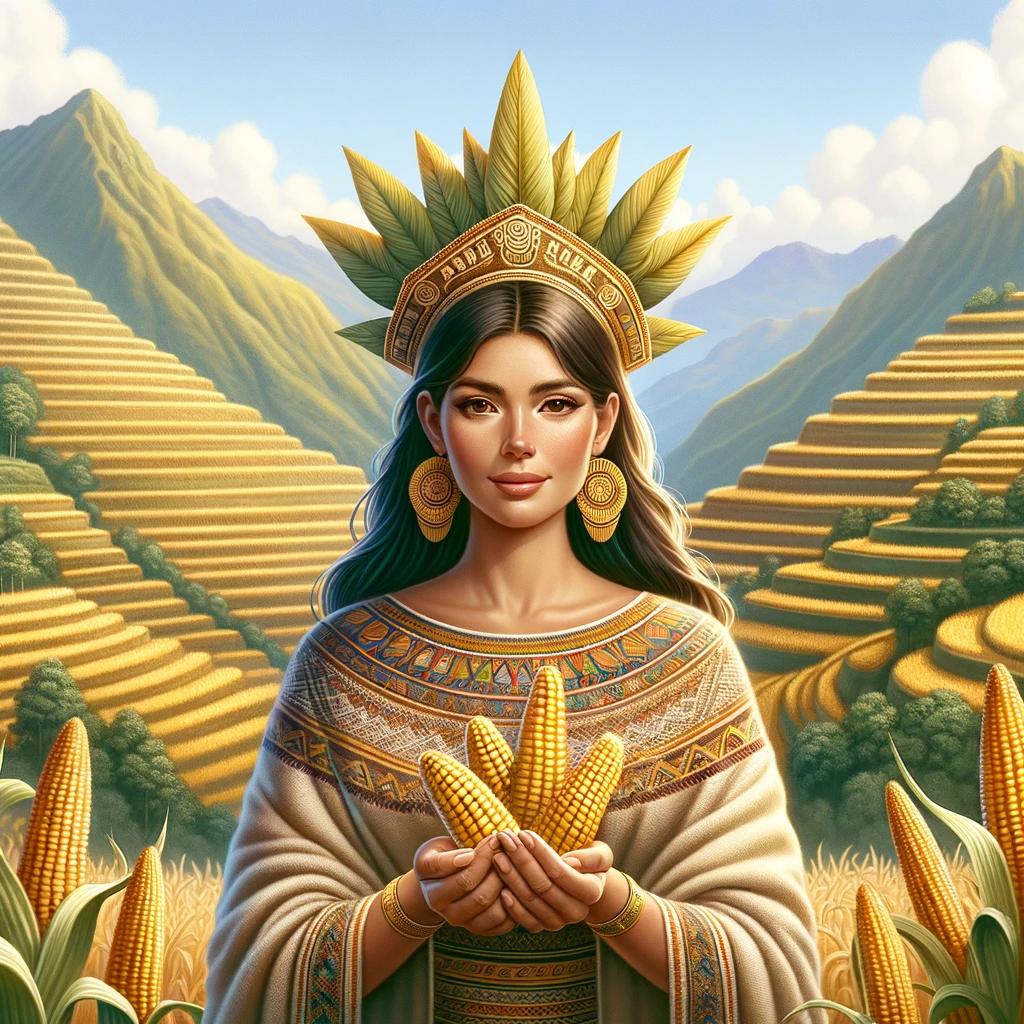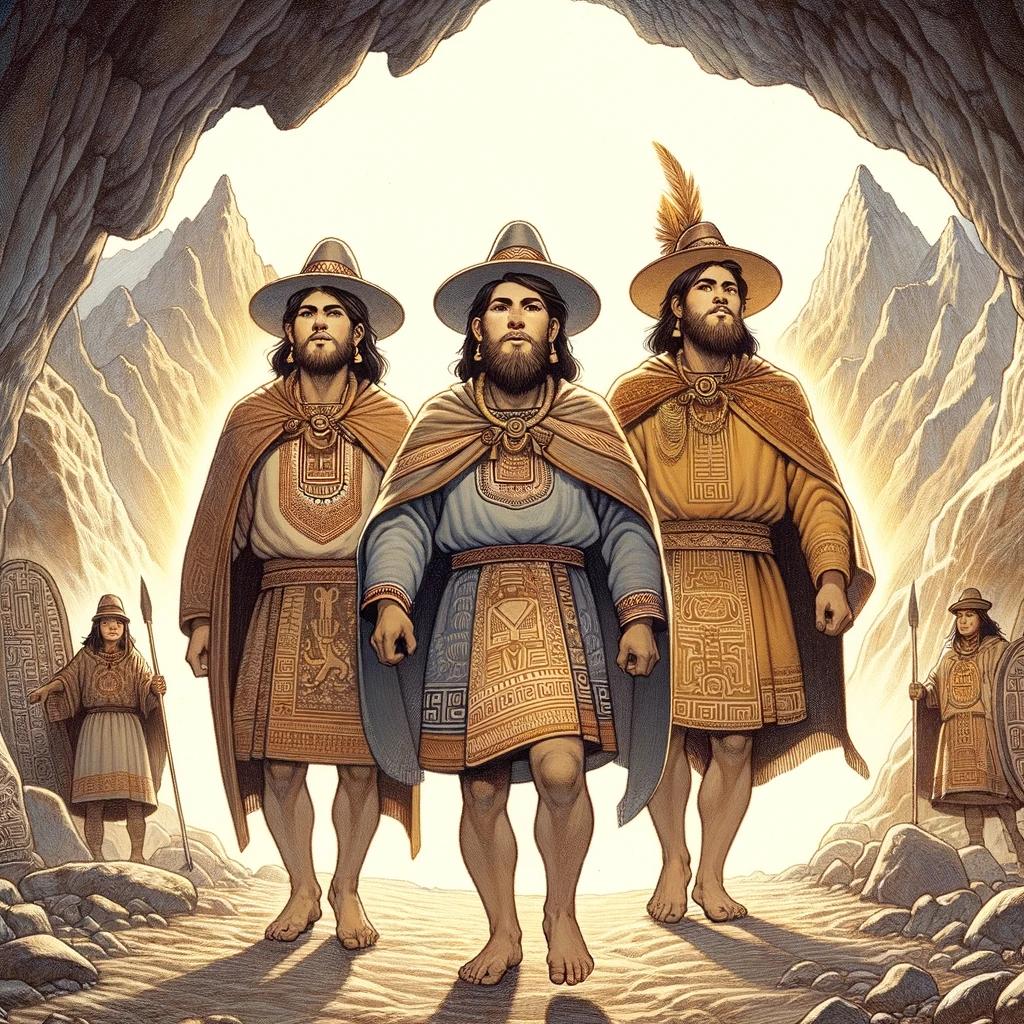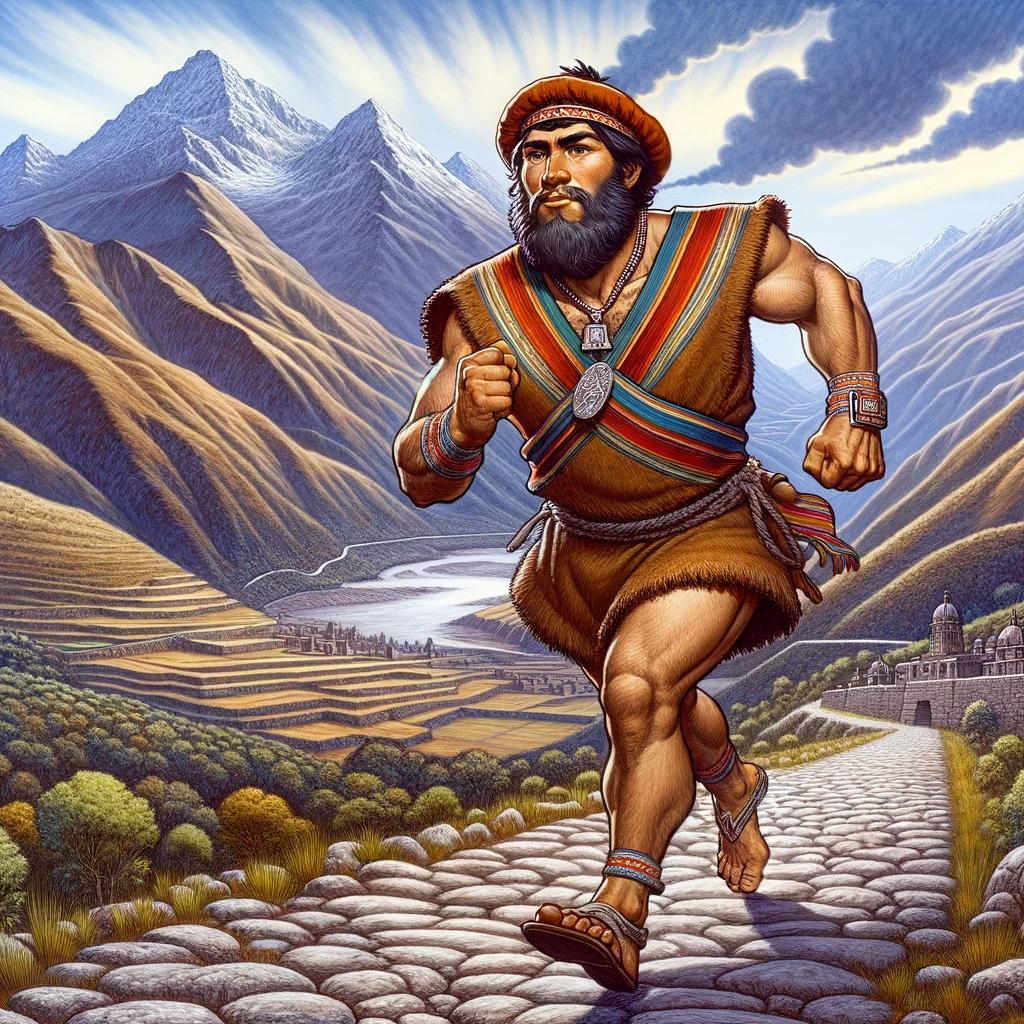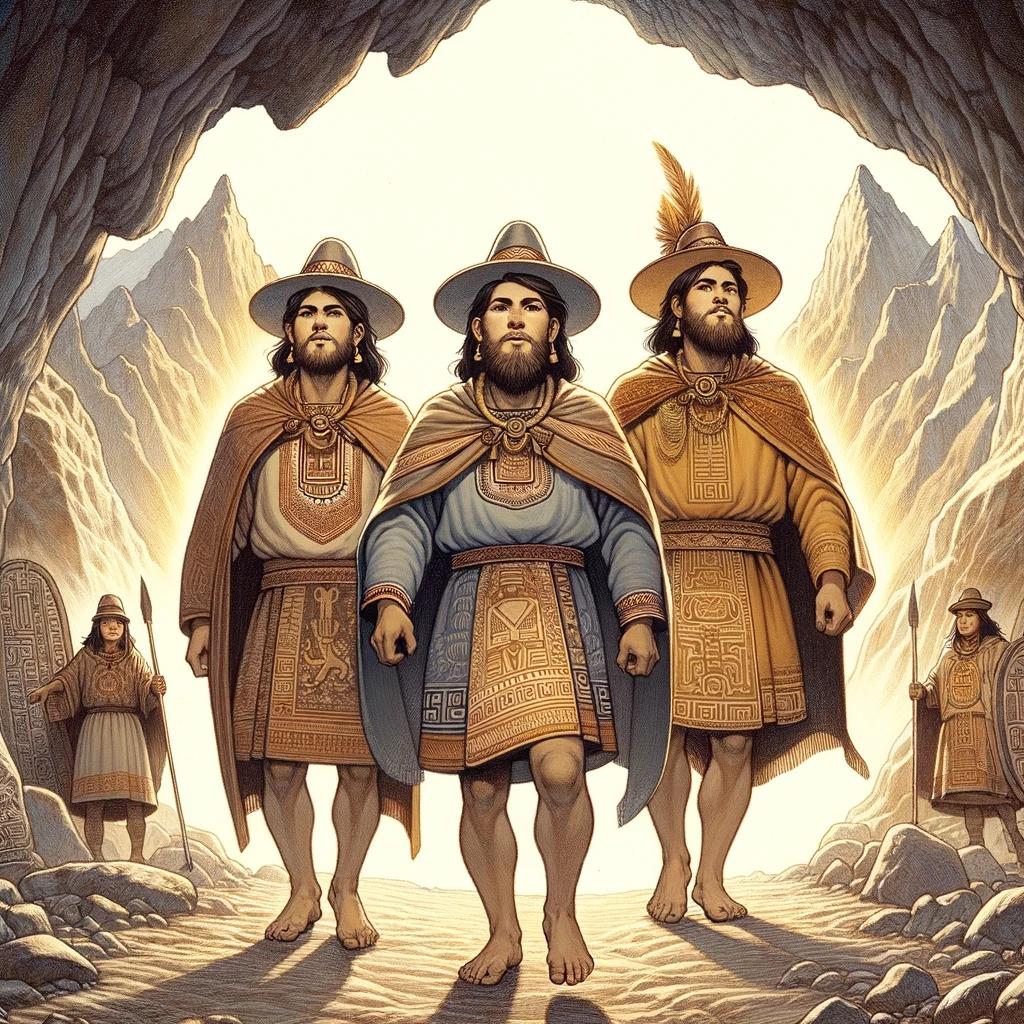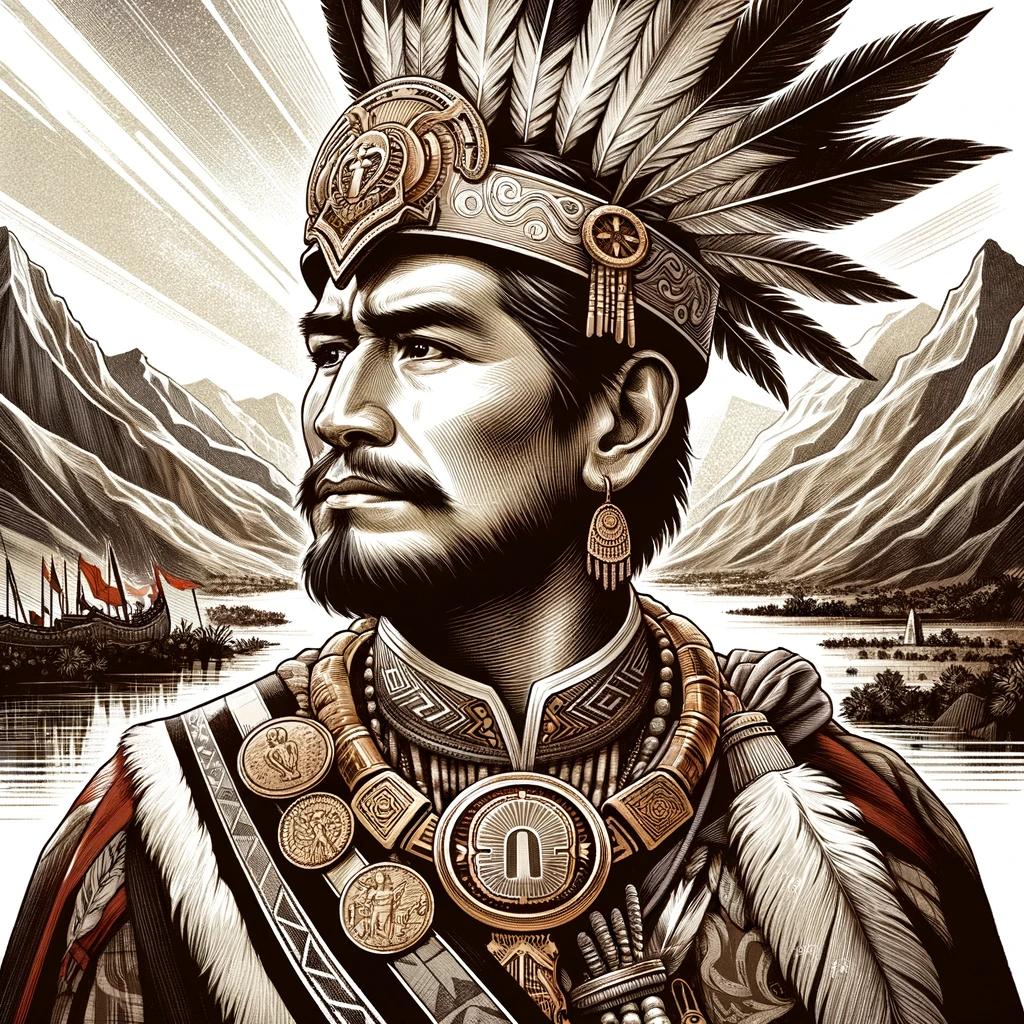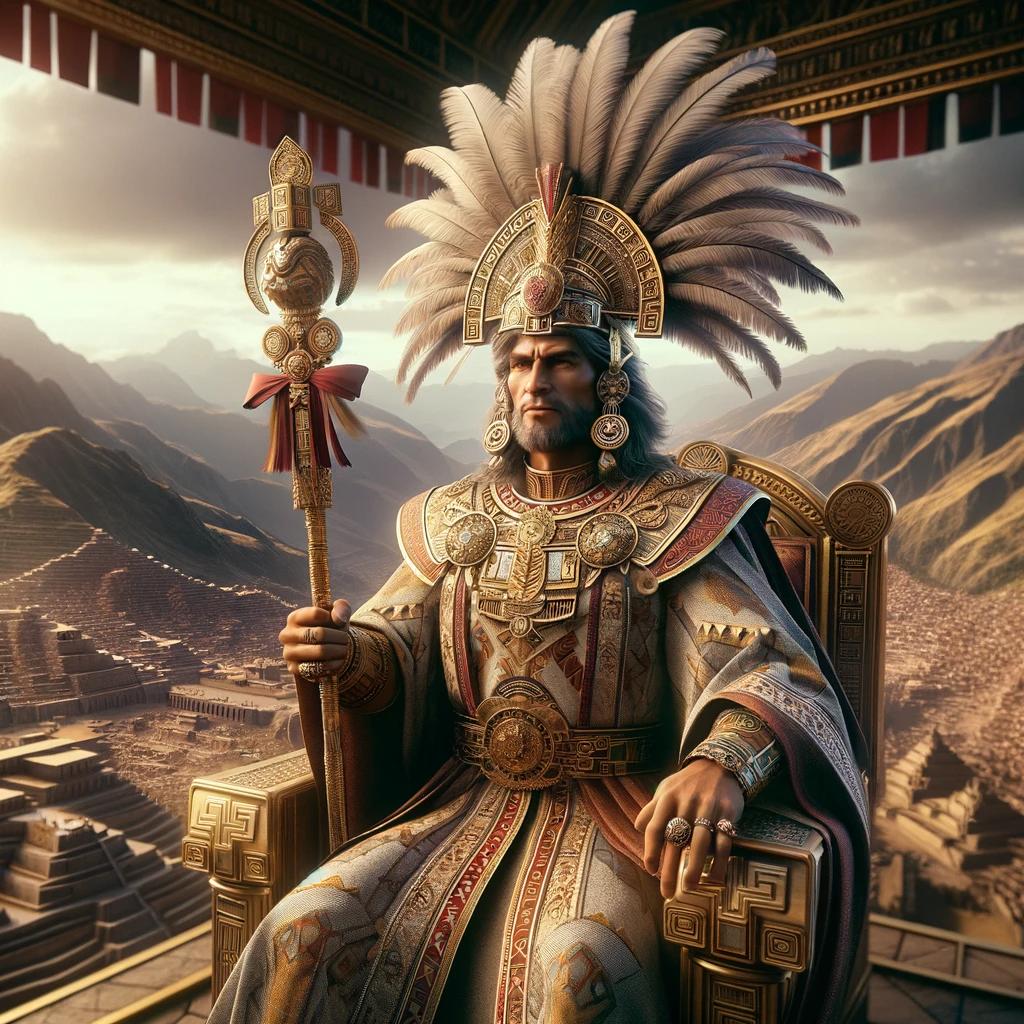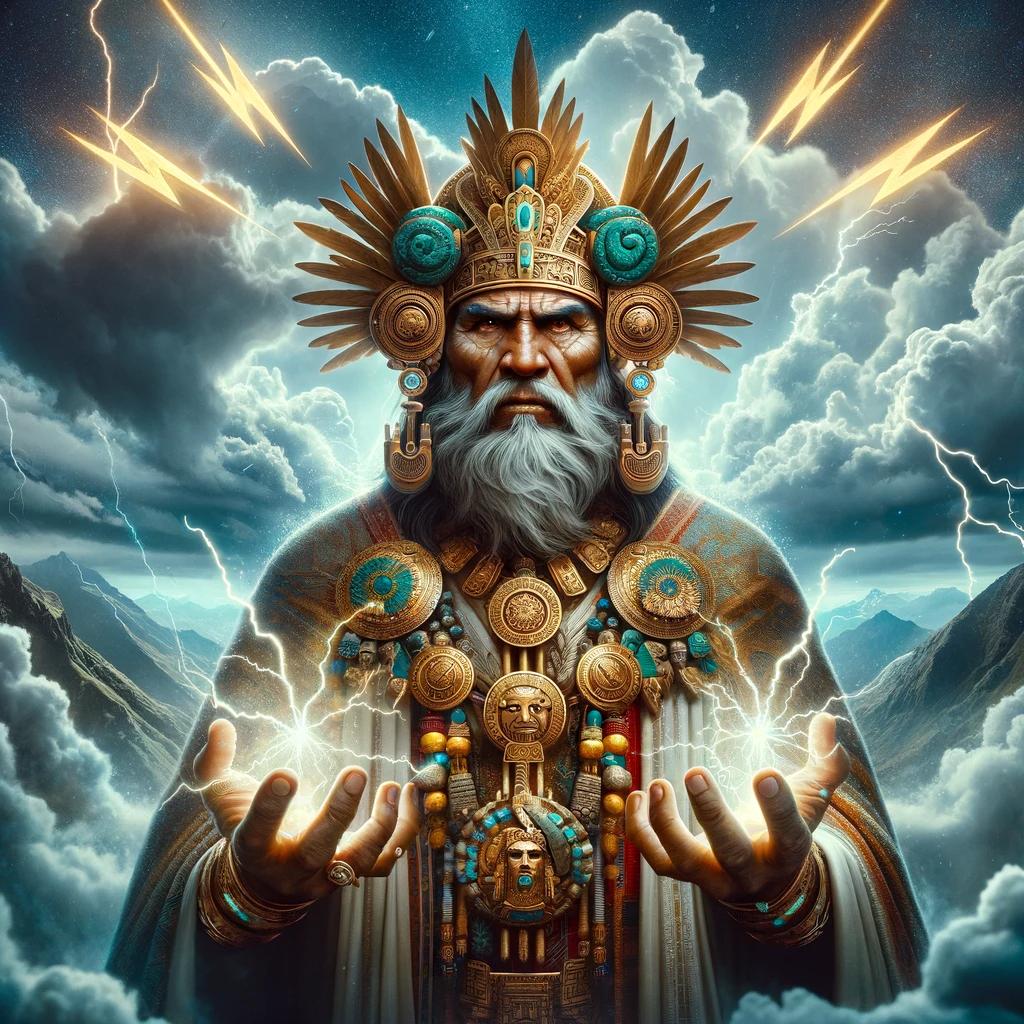When did the Inca Civilization start and end: A Brief History of the Inca Empire
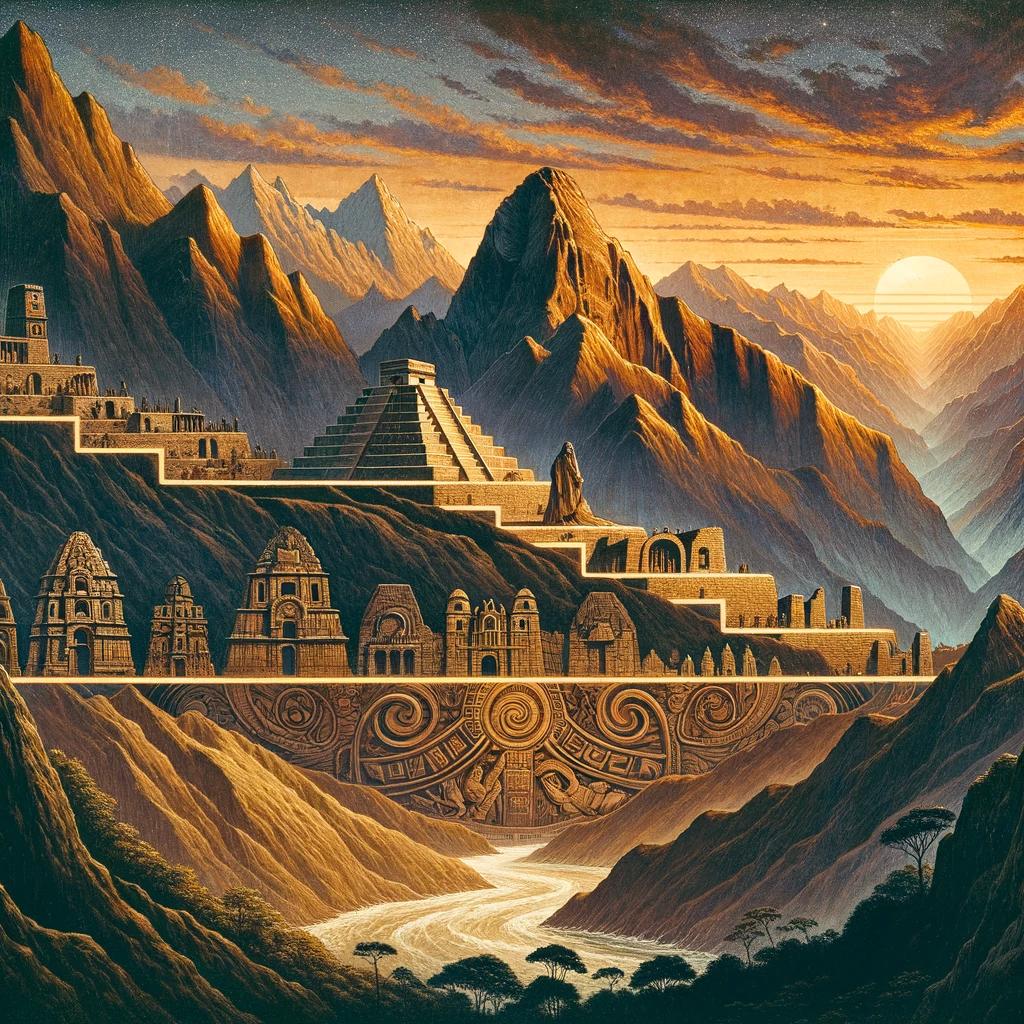
The Inca Civilization, one of the largest and most advanced societies in the pre-Columbian Western Hemisphere, thrived from approximately 1438 to 1533 AD. Spanning from Peru to Chile, the Inca Empire was the largest native state in the Western Hemisphere, with a population of around 12 million people.
This article provides an overview of the rise, expansion, daily life, religion, and ultimate fall of the Inca Empire, as well as its lasting influence and modern-day discoveries.
Overview of the Inca Empire
The Inca Empire was a remarkable civilization that thrived in the Western Hemisphere before the arrival of Europeans.
This overview provides insights into the rise and expansion of the Inca Empire, as well as its society and government structure.
Rise and Expansion of the Inca Empire
The Inca Empire’s rise to power began with its legendary origins and early history. According to Inca mythology, the sun god Inti sent his son Manco Capac to establish a settlement in Cusco, which would eventually become the capital of the Inca Empire.
Under the leadership of influential emperors like Pachacuti, the Inca Empire rapidly expanded through military campaigns and diplomatic alliances. Their conquests extended from the southern part of modern-day Colombia to the central regions of Chile.
Inca Society and Government Structure
The Inca society was highly structured and organized. At the top of the hierarchy was the Sapa Inca, the emperor, who held absolute power and was considered divine. Beneath the emperor, noble and administrative elites called the nobles held significant influence.
The Inca Empire maintained control over its vast territories through a complex network of local governors and administrative centers.
Inca society was also marked by a system of labor called mita, where individuals from various communities were obligated to contribute to public projects and serve in the military.
This system helped sustain the empire’s growing economy and infrastructure development.
The government structure was centralized, with strong emphasis on tribute collection, resource distribution, and military organization. Administrative duties were performed through a system called Tahuantinsuyu, which divided the empire into four regions and utilized a hierarchy of officials to manage local affairs.
Throughout the empire, the Inca established a common language, Quechua, which contributed to effective communication and unity among their diverse subjects.
- Origins and Early History of the Incas
- Pachacuti: The Golden Age of the Inca Empire
- Inca Conquest and Expansion
These subtopics delve deeper into the origins of the Incas, their major historical figures, and the significant territorial expansion that shaped their empire.
The Inca civilization left an indelible mark on the history of the Western Hemisphere. Through their extensive conquests, social organization, and impressive engineering feats, they created a lasting legacy that continues to captivate our imagination to this day.
The Inca Civilization: Key Historical Events
The history of the Inca Empire is marked by significant events that shaped its rise, expansion, and eventually, its fall. This section explores the origins and early history of the Incas, the golden age of Pachacuti, and the conquest and expansion of the empire.
Origins and Early History of the Incas
The Inca civilization traces its roots to mythical origins. According to Inca mythology, their first emperor, Manco Capac, was sent to Earth by Inti, the sun god. Manco Capac led his people to settle in the fertile Cusco Valley, where they founded the Kingdom of Cuzco.
This marked the beginning of the Inca Empire’s establishment.
Over time, the Incas expanded their influence through military campaigns and strategic alliances. They absorbed and assimilated various Andean cultures and incorporated their traditions into their own society.
This cultural amalgamation laid the foundation for the Inca Empire’s unique identity.
Pachacuti: The Golden Age of the Inca Empire
One of the most influential rulers in Inca history was Pachacuti, the ninth emperor. Under his reign, the Inca Empire experienced its golden age. Pachacuti implemented significant political and military reforms that propelled the empire to new heights.
Pachacuti organized a series of successful military campaigns, expanding Inca territories with remarkable speed. He unified tribes, established a well-developed system of governance, and implemented efficient administrative and taxation systems. Pachacuti’s rule marked a period of unprecedented growth and prosperity for the Inca Empire.
Inca Conquest and Expansion
The Inca Empire continued to expand rapidly under subsequent emperors. Through military conquests and strategic alliances, they extended their domain across a vast territory, encompassing present-day Peru, Ecuador, Bolivia, Chile, and parts of Colombia and Argentina.
The Incas utilized a combination of military might, diplomacy, and cultural assimilation to bring existing societies under their control. They implemented a system of governance that allowed local leaders to retain their positions while being loyal subjects of the Inca Empire.
This approach facilitated the empire’s growth and stability.
The Inca Empire’s conquests were accompanied by ambitious infrastructural projects, including the development of road networks, bridges, and agricultural terraces, facilitating communication, trade, and resource exploitation.
Overall, the key historical events of the Inca Empire, from its mythical origins to its conquests and expansion, contributed to its status as a prominent civilization in the Americas.
Daily Life in the Inca Empire
Daily life in the Inca Empire was centered around agriculture, which was essential for the sustenance of the population.
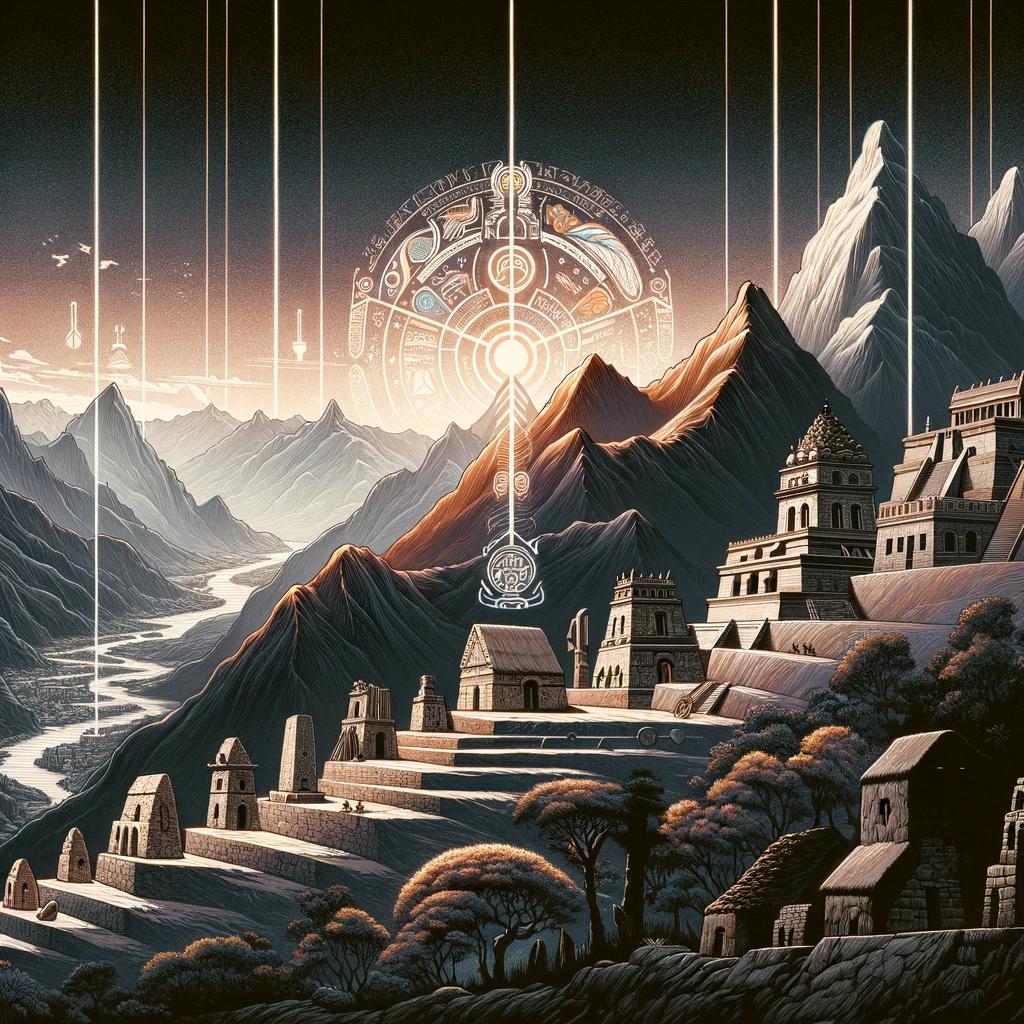
The Inca people were skilled farmers, utilizing ingenious techniques to cultivate crops in the challenging mountainous terrain.
Agriculture and Food Production
Inca agriculture was highly organized and efficient. The Inca Empire had an extensive network of agricultural terraces known as “andenes” that allowed them to grow a variety of crops such as potatoes, maize, quinoa, and beans.
They also practiced terrace irrigation to ensure a steady water supply for their crops.
In addition to farming, the Inca Empire had an elaborate system of storage and distribution of food.
They constructed large-scale granaries known as “qollqas” to store surplus food for times of scarcity or to support their armies during military campaigns. Food was also distributed among the population through state-run storehouses.
Inca Technology and Infrastructure
The Inca Empire was renowned for its advanced engineering and infrastructure. They built an extensive network of roads and bridges, known as the “Qhapaq Ñan,” enabling efficient communication, trade, and government administration throughout the empire.
These roads were meticulously constructed and maintained, allowing messengers known as “chasquis” to relay information swiftly.
Another remarkable feat of Inca technology was their remarkable stonework. They constructed magnificent buildings and temples using massive stones that fit together with precision, completely without the use of mortar.
A prime example of their architectural expertise is the awe-inspiring citadel of Machu Picchu.
In terms of transportation, the Inca Empire had a system of messenger runners, road maintenance teams, and llama caravans that facilitated the movement of people, goods, and information across vast distances.
The Inca Empire also had an intricate system of recordkeeping, known as “quipu.” Quipus were made of knotted cords of various colors and thicknesses, serving as a method for numerical calculations and keeping records of taxes, census data, and historical information.
Overall, the daily life of the Inca Empire revolved around the effective cultivation of food through advanced agricultural methods and the development of impressive infrastructure and technology that facilitated communication, trade, and governance.
- Agriculture and Food Production
- Organized agricultural terraces and irrigation
- Growing crops such as potatoes, maize, quinoa, and beans
- Large-scale granaries for food storage
- Inca Technology and Infrastructure
- Extensive road networks and bridges
- Precise stonework with no mortar
- Messenger runners and llama caravans for transportation
- Quipus for recordkeeping and historical information
Inca Religion and Beliefs
The Inca civilization had a rich and complex religious system that played a central role in their society.
This section explores their beliefs, gods, and rituals.
Inca Gods and Deities
The Incas worshiped a multitude of gods and deities, each with their own specific domain and significance. Some of the prominent gods in their pantheon included:
- Inti: The sun god and the most important deity in the Inca religion.
- Viracocha: The creator god who was responsible for bringing life and order to the world.
- Pachamama: The earth goddess who represented fertility and Mother Nature.
- Apu Illapu: The god of thunder and rain, connected to agricultural abundance and prosperity.
Rituals and Ceremonies in Inca Society
Rituals and ceremonies were an integral part of Inca religious practices.
They were performed to honor the gods, seek their blessings, and ensure the welfare of the empire. Some of the notable rituals and ceremonies include:
- Inti Raymi: The most important religious festival dedicated to the sun god, Inti. It was celebrated annually with grand feasts, dances, and sacrifices.
- Capacocha: A ritual of human sacrifice, often involving children, to appease and honor the gods during times of crisis or major events.
- Offerings to Pachamama: Ceremonies where offerings of food, drink, and other items were given to the earth goddess as a gesture of gratitude and respect.
- Divination and Oracle Readings: Priests and shamans used various techniques like reading coca leaves or observing animal behavior to predict the future and seek guidance from the gods.
The Inca religion and its rituals provided a significant framework for the social, cultural, and spiritual life of the Inca society.
They believed that maintaining a harmonious relationship with the gods was crucial for the well-being and prosperity of the empire.
Influence of the Inca Civilization
Art and Architecture of the Incas
The art and architecture of the Incas were remarkable and continue to inspire awe today.
Their monumental constructions, such as the stunning structures of Machu Picchu, showcase their ingenuity and mastery as builders. The Incas utilized sophisticated techniques in stone masonry to create precise and intricately designed structures.
These architectural marvels, with their precise fitting stones and advanced drainage systems, demonstrate the advanced engineering skills of the Incas.
The Inca art was predominantly religious and was closely tied to their beliefs and rituals.
Their artistic expressions were characterized by intricate textile works, both decorative and functional ceramics, and the use of coca leaves for medicinal purposes. The textiles were elaborately woven and showcased vibrant colors and intricate patterns, reflecting the high level of skill and craftsmanship of the Inca weavers.
Cultural Legacy of the Inca Empire
The cultural legacy of the Inca Empire is still evident today, shaping the identity and traditions of the Andean region. Despite the Spanish conquest and the subsequent colonization, many aspects of Inca culture have been preserved and continue to be celebrated.
The Inca language, Quechua, is still spoken by millions of people in Peru and other Andean countries. Traditional practices, such as agricultural techniques and communal labor systems, have been passed down through generations.
- Machu Picchu: This ancient Inca city has become an iconic symbol of the Inca civilization and attracts millions of visitors from around the world each year.
- Textile Traditions: The art of traditional Inca textile weaving is still practiced by indigenous communities, preserving the intricate designs and techniques.
- Cultural Festivals: Various festivals and celebrations, such as Inti Raymi (Festival of the Sun), pay homage to the Inca traditions and keep their cultural heritage alive.
Through their lasting influence on architecture, art, language, and cultural practices, the Inca civilization has left an indelible mark on the Andean region and continues to be celebrated and appreciated today.
It serves as a reminder of the remarkable achievements of the ancient Inca people and their enduring legacy in the modern world.
The Fall of the Inca Empire
The fall of the Inca Empire marked a turning point in the history of the Incas due to the Spanish conquest and colonization. This section explores the events leading to their downfall, as well as the devastating impact of European diseases on the Incas.
Spanish Conquest and Colonization
As the Spanish conquistadors arrived in South America in the early 16th century, the Inca Empire faced a formidable adversary. Led by Francisco Pizarro, the Spanish forces employed superior military tactics, advanced weaponry, and alliances with native populations hostile to the Incas.
In 1532, Pizarro captured the Inca Emperor Atahualpa during a meeting in Cajamarca, leading to the eventual downfall of the Inca Empire. The Spaniards systematically sought to dismantle the empire, seizing control of key Inca cities and territories.
Impact of European Diseases on the Incas
One of the most devastating factors contributing to the fall of the Inca Empire was the introduction of European diseases, to which the Incas had no immunity. Diseases like smallpox, influenza, and measles, brought by the Spanish, spread rapidly through Inca communities, causing widespread death and devastation.
The outbreak of these diseases, coupled with the turmoil caused by the Spanish conquest, resulted in a significant decline in the Inca population. The decline and loss of their centralized leadership weakened the Inca Empire’s ability to resist the Spanish onslaught.
Despite fierce resistance from the Incas, including several uprisings and attempts to regain control, the Spanish ultimately established dominance over the Inca territories, establishing the Viceroyalty of Peru as part of the Spanish Empire.
In conclusion, the fall of the Inca Empire was a result of the Spanish conquest and colonization efforts, coupled with the devastating impact of European diseases. The once mighty empire, with its rich cultural heritage and elaborate societal structure, succumbed to the overwhelming forces brought by the Spanish invaders.
Yet, the legacy of the Inca civilization continues to captivate and inspire people around the world, as evident in ongoing archaeological discoveries and efforts to preserve their cultural heritage.
Modern-Day Discoveries and Preservation of Inca Culture
In the present day, ongoing archaeological efforts have unearthed remarkable sites and treasures that shed light on the rich cultural heritage of the Inca civilization.
Additionally, there are dedicated efforts to preserve and protect the remnants of this ancient empire, ensuring that future generations can appreciate its significance.
Archaeological Sites and Treasures
The exploration and excavation of various archaeological sites have revealed astounding insights into the daily life, architecture, and artistic achievements of the Incas. Sites such as Machu Picchu, Sacsayhuaman, and Ollantaytambo have captivated the world with their impressive structures and engineering marvels.
These sites offer a glimpse into the advanced knowledge and impeccable craftsmanship of the Inca people. Visitors can marvel at the precision stonework, intricate carvings, and strategic urban planning that characterize these ancient ruins.
Moreover, the discovery of precious artifacts, including pottery, jewelry, textiles, and metalwork, provides invaluable clues about the cultural practices and artistic expressions of the Incas. These treasures are carefully studied, preserved, and displayed in museums, allowing people to admire the incredible craftsmanship and artistic ingenuity of this remarkable civilization.
Efforts to Preserve Inca Heritage
Recognizing the importance of preserving the Inca heritage, various initiatives and organizations are actively involved in safeguarding the remaining vestiges of the Inca Empire. These efforts encompass the conservation of archaeological sites, protection of cultural traditions, and promotion of sustainable tourism.
Government agencies collaborate with local communities to implement sustainable practices that balance the conservation of historical sites with the needs of the surrounding environment. This includes managing visitor access, maintaining infrastructure, and ensuring the preservation of delicate artifacts.
Furthermore, educational programs and community outreach initiatives aim to raise awareness about the significance of the Inca civilization. Cultural festivals, traditional performances, and exhibitions help to showcase the rich traditions, customs, and beliefs of the Incas, fostering a deeper appreciation for their legacy.
By engaging in these preservation efforts, we can ensure that the magnificent culture of the Inca Empire continues to inspire and educate future generations, allowing them to connect with this extraordinary chapter in history.
.











